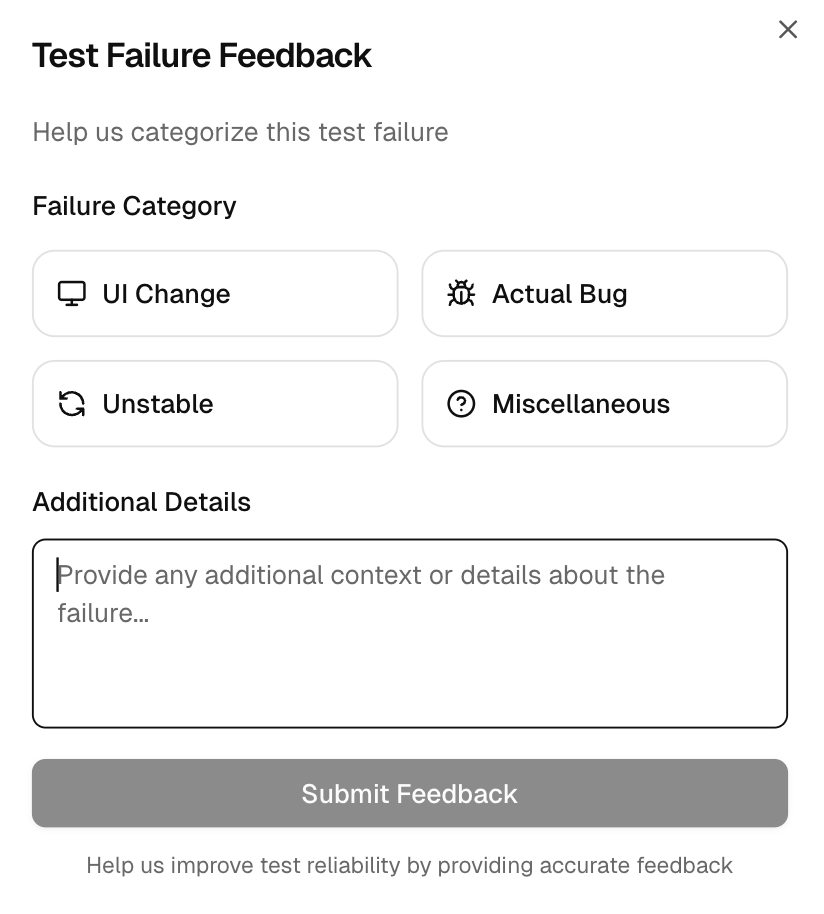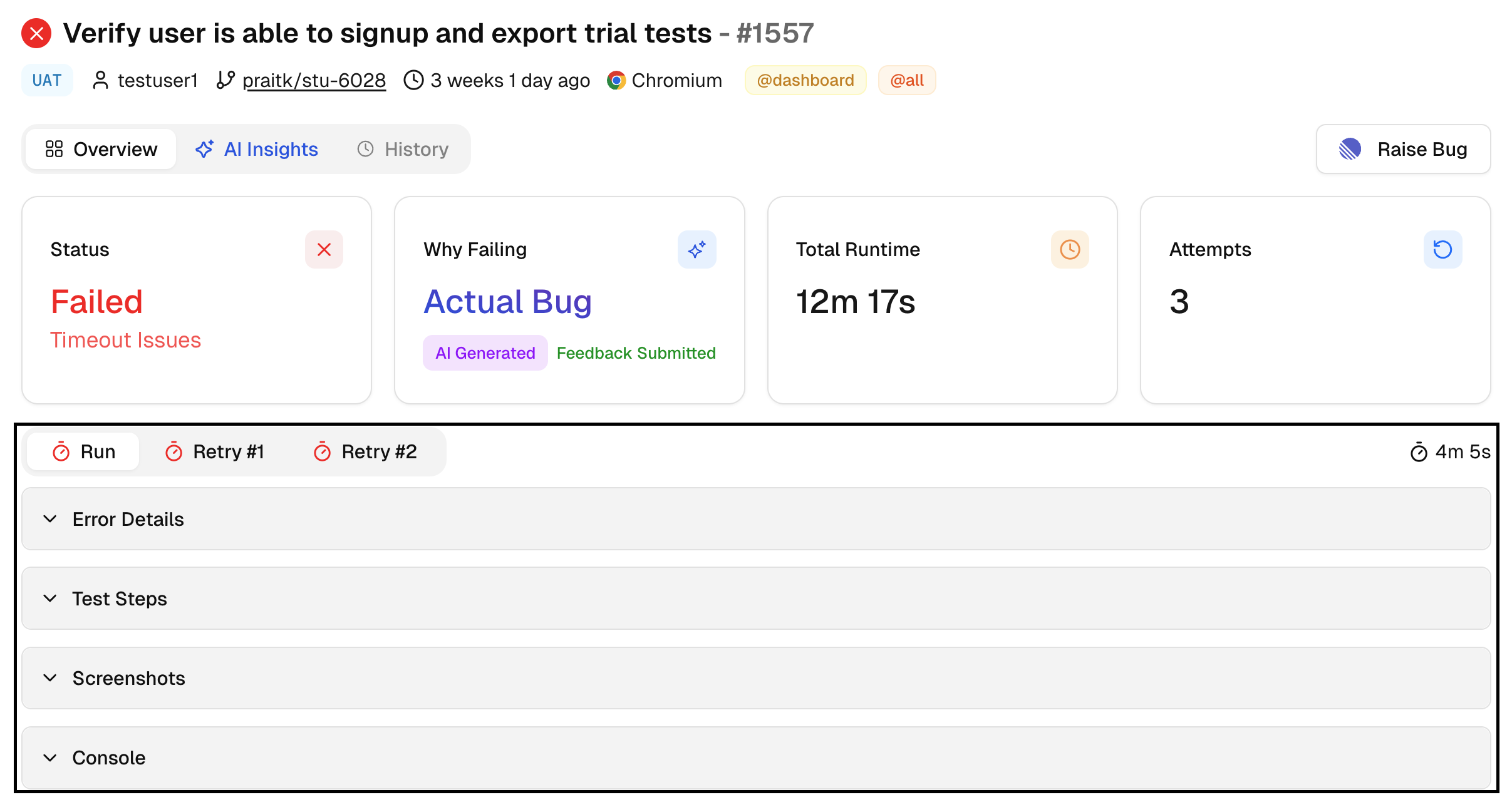Overview
Summarize the current test’s state for this run. Show status, primary cause, runtime, attempts, and links to evidence.
KPI Tiles
1. Status
Outcome for this run: Passed, Failed, Skipped, or Flaky. When not passed, the primary technical cause is identified, allowing triage to start with context.
2. Why failing
AI category for the failure: Actual Bug, UI Change, Unstable, or Miscellaneous, with a confidence score. Helps decide whether to fix code, update selectors, or stabilize the test.
Feedback on classification
Available for failed or flaky tests. Use the Test Failure Feedback form to set the correct category and add optional context.
Your input updates this run and improves future classification, making AI Insights more reliable for the team.
3. Total runtime
Total execution time for this test in the current run. Useful for spotting slowdowns after code or configuration changes.
4. Attempts
Number of retries executed by your retry settings. A pass after a retry often signals instability that needs cleanup.
Evidence panels
Tabs per attempt (Run, Retry 1, Retry 2).
1. Error details
Exact error text and key line. Copy to reproduce locally or link in a ticket.
2. Test steps
Step list with per-step timing. Confirms where the error occurred in the flow.
3. Screenshots
Captured frames from the attempt. Validate UI state at the point of failure.
4. Console
Browser console output. Use it to correlate network or script errors with UI symptoms.
5. Video
Full recording of the attempt. View the timeline to verify the sequence leading to the error, timing between steps, and visual state across retries.
6. Attachments
Interactive Playwright trace for the attempt. Inspect the timeline, actions, network calls, console, and DOM snapshots; jump to the failing step for root-cause analysis.
Visible only when Playwright tracing is enabled (for example, trace: ‘on’or trace: 'on-first-retry')
7. Feature Comparison - Enable fast review of snapshot failures without leaving TestDino. The panel appears for tests that use Playwright visual assertions (for example, toHaveScreenshot).
Use Visual Comparison to review Actual, Expected, Diff, Side-by-Side, and Slider views of screenshots
| Mode | What it shows | How it helps |
|---|---|---|
| Diff | Colored overlays for changed regions | Pinpoints small layout or visual shifts quickly |
| Actual | Runtime screenshot from the failing attempt | Inspects what was rendered during the test |
| Expected | Stored baseline (reference) image | Confirms whether the baseline must change |
| Side by Side | Expected and actual in two panes | Compare at a glance, scans across elements |
| Slider | Interactive sweep between images | Examines precise areas for subtle differences |
Note:
-
Visible only when visual comparisons were generated by the test suite.
-
If no snapshot artifacts exist, the Image Mismatch panel is hidden.


